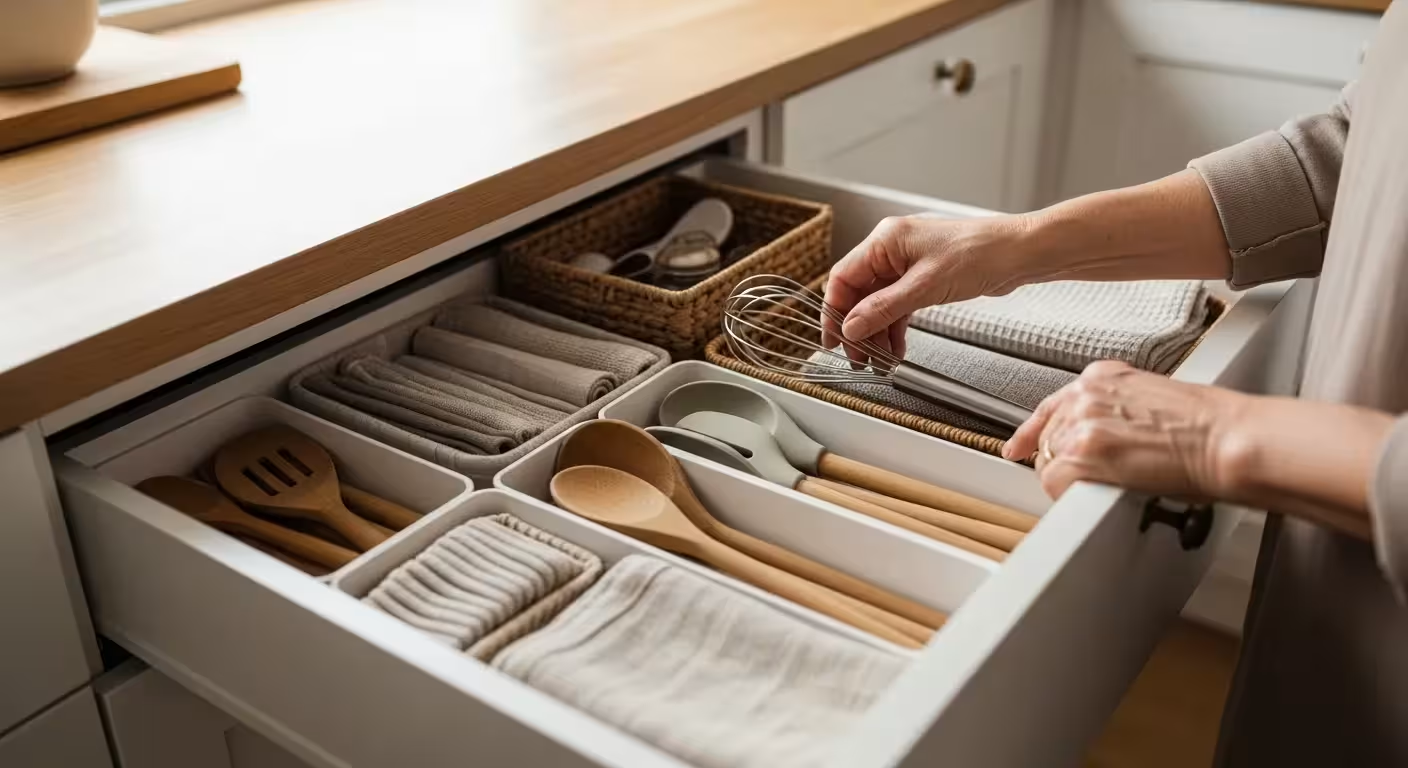
Phase 2: The Kitchen – The Heart of the Home
A well-organized kitchen makes meal preparation easier, reduces food waste, and turns a daily chore into a more pleasant experience. We will approach this vital room in three parts: the countertops, the cabinets and pantry, and the infamous “junk drawer.” Our goal is efficiency and accessibility.
Countertops and High-Use Zones
Kitchen counters are for preparation, not permanent storage. The more clear counter space you have, the easier it is to cook and clean. Identify the items you use every single day—the coffee maker, the toaster, a knife block. These can earn a spot on the counter. Everything else should have a home inside a cabinet or drawer.
Relocate small appliances you use weekly (like a blender) to an easily accessible cabinet. For items used monthly or less (like a stand mixer or waffle iron), find a home in a lower cabinet or the pantry. This decluttering step immediately makes the kitchen feel larger and more functional.
Cabinets and Pantry: The “First-Expiring, First-Out” System
The key to organized food storage is visibility. You can’t use what you can’t see. This is where we apply smart home organization techniques to prevent waste and save money.
The Action Plan:
1. One Shelf at a Time: Don’t empty the entire pantry at once. Start with a single shelf. Take everything off, wipe it down, and check expiration dates. Dispose of expired food properly.
2. Group Like with Like: As you put items back, create categories. All baking supplies go together. Canned goods, pastas and grains, snacks, and oils and vinegars should each have their own designated area.
3. Implement FEFO: This stands for “First-Expiring, First-Out.” It’s a system used in grocery stores that works perfectly at home. When you buy a new can of tomatoes, place it at the back of the shelf and pull the older cans forward. This ensures you use up food before it expires.
4. Consider Decanting: For dry goods like flour, sugar, and pasta, “decanting”—or moving them from their original packaging into clear, airtight containers—can be a great strategy. It keeps food fresher, protects against pests, and allows you to see at a glance how much you have left. Measure your shelf height and depth before buying. Standard 6-inch by 6-inch square containers often stack very efficiently.
The Junk Drawer Transformed
Every home has one, but it doesn’t have to be a chaotic mess. A “utility drawer” is a far more useful concept. This is the perfect place for a micro-project that delivers a big win.
Worked Example: The Utility Drawer Makeover
1. Empty and Edit: Dump the entire contents of the drawer onto a towel. You’ll likely find old rubber bands, dried-up pens, and mystery keys. Use your 4-pile method ruthlessly.
2. Measure and Contain: Measure the interior dimensions of your drawer (e.g., 15 inches wide, 20 inches deep, 3 inches high). Purchase an adjustable drawer divider or a set of small, modular trays. Look for a kit that has a mix of sizes, like 3×3-inch, 3×6-inch, and 6×9-inch trays.
3. Assign Homes: Arrange the trays within the drawer and give each one a specific job. A 3×3-inch tray is perfect for paper clips and stamps. A 3×6-inch tray can hold pens and a small notepad. A 6×9-inch tray can house scissors, tape, and a small flashlight. By giving every item a specific, contained home, the drawer stays organized.


















One Response
I wish y’all had a free app I could put on my tablet to help me with the decluttering and cleaning up my home. I am a senior sometimes frustrated with the “ move something from one place to another place” just to get that one area cleaned